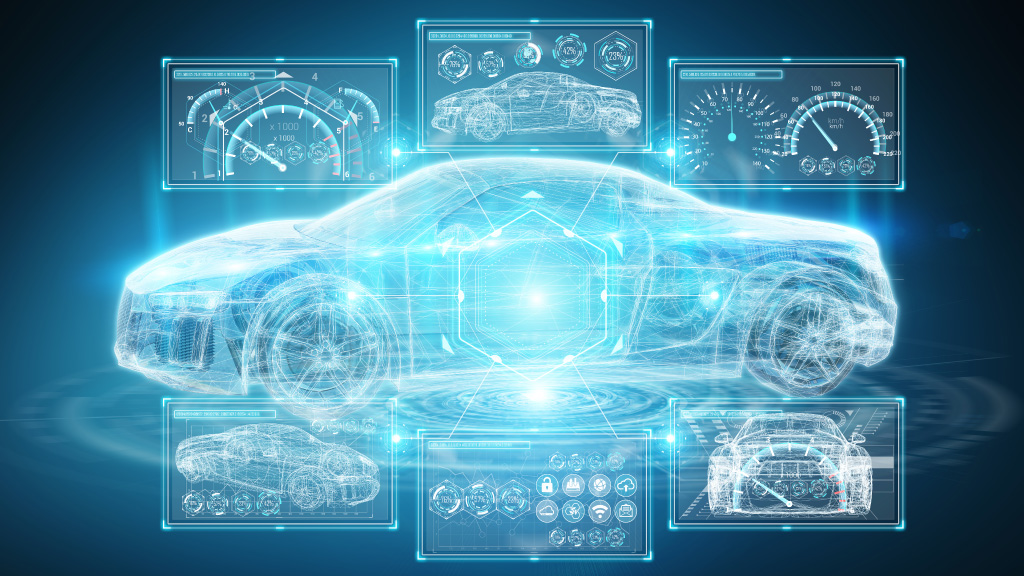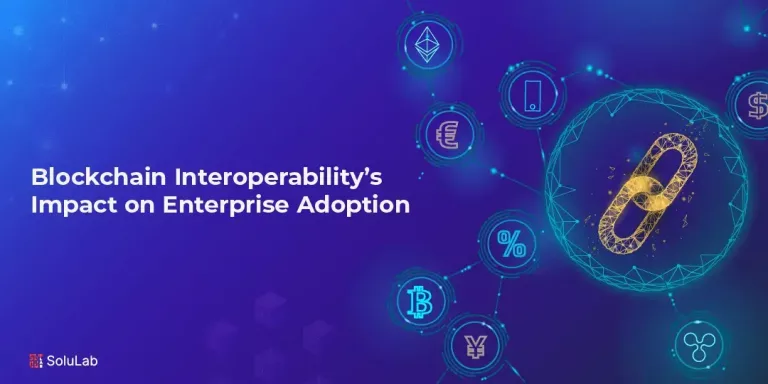
Blockchain Automotive solutions can assist drivers
What uses does blockchain have in the automotive industry and how will this technology improve drivers’ everyday lives? Find out how blockchain works and discover potential applications that could improve the mobility of the future.
When they hear the term “blockchain”, most people think of bitcoin. While cryptocurrency is the best-known example of how this technology is used, blockchain offers a solution to a variety of future issues and can also make life easier for motorists, for example when they’re buying a used car.
“Blockchain technology itself is not the end-all solution,” explains Chintan Thakkar, Head of Distributed Ledger and Emerging Technologies at the SoluLab Inc. “What it does is give us the technical foundation we need to create helpful and effective solutions.”Chintan leads the IT team in the SoluLab Inc that works with the specialist departments to develop potential blockchain use cases that could shape the mobility of the future. Read on to find out about three of them.
What is Blockchain?
Blockchains are a new form of a database. They store transactions (such as transfers, deliveries, or purchases) in blocks. Their advantages arise primarily from two principles: A blockchain works decentrally. All participants first determine what information should go into the blockchain – they agree, so to speak, on certain rules of cooperation. Then they store all transactions on the blockchain as equals and monitor each other. There is no central server that could fail or be manipulated. Anyone who tries to change data, later on, would have to do so with more than half of all participants.
Each block receives a digital fingerprint known as a “hash”. And each block contains the hash of the previous block and thus its encoded content. This means that all blocks are linked together (hence the word “chain”). So if someone were to change a block of data, the manipulation would immediately attract attention because the content and fingerprint would no longer match.
USE CASE #1: A DIGITAL VEHICLE PASSPORT THROUGH BLOCKCHAIN
At the very latest when the car is being resold, questions like “What’s the mileage of this car? Has it been in an accident? Did the previous owner regularly take it to check up on?” will come up. Until now, buyers couldn’t be completely certain of the answers.
Blockchain-based solutions like VerifyCar offer a cure for this problem. This app, currently being piloted, could enable users to track and verify the complete vehicle history, and share data – like the mileage – with third parties. It could even be used in conversation with the seller: “As a potential buyer, I could use the VerifyCar app on my phone to scan the QR code in the seller’s app,” Chintan explains. “A green check mark then tells me that the used vehicle’s data is plausible and has been verified.”
Blockchain automotive solutions: more secure than a workshop stamp in a logbook digital blockchain method would, therefore, be more secure against forgery than conventional proofs of a vehicle’s mileage. “Theoretically, you can forge a stamp for checkbooks with a color printer,” says Chintan. “A data record on a blockchain, on the other hand, cannot be manipulated with current technology.” Occurrences like accidents or the number of previous owners could also be stored in the VerifyCar app without risk of subsequent falsification.
However, the blockchain doesn’t only facilitate data transfer between private individuals. Car owners could, for example, also send verified data on the mileage of their car to a car insurance company in order to receive a discount for infrequent drivers. For security reasons, this has so far only been possible by accessing an isolated database. The decentralized blockchain could facilitate access to this information without compromising security.
USE CASE #2: SAFE RAW MATERIAL SOURCES THANKS TO BLOCKCHAIN TECHNOLOGY
The key term here is “supply chain verification” – the tracking and documentation of supply chains. Both tasks are important not only for construction and spare parts but also for materials. Some raw materials like cobalt or wolframite come from sources that are difficult to monitor, like mines in developing countries. Many supply chains run through dozens of stations and middlemen. Such broad and diverging paths are susceptible to manipulation. That’s why SoluLab Inc is pursuing blockchain-based pilot projects that make the path of minerals traceable.
The first question is: How can we physically prevent material from being replaced or mixed? This is done using traditional methods such as barcodes and seals – but also with innovative techniques like chemical tracers. These are chemical additives that are added to a batch of material to make it individually identifiable and machine-readable with a scanner.
A supply chain with blockchain
What follows is the connection between the physical and the digital world – each step of the supply chain is documented in a blockchain, meaning it is decentralized, always visible, and forgery-proof. This would enable a refinery, for example, to prove that the raw material it supplies actually comes from a specific mine and not from questionable sources.
The blockchain-based method offers many advantages to everyday business, such as easier certification and shorter customs procedures. For end-users, the advantages of a blockchain-verified supply chain are obvious: better protection against counterfeit spare parts, for example, or a clear conscience regarding the raw materials used in a car.
USE CASE #3: CHARGE E-CARS MORE EASILY WITH BLOCKCHAIN AUTOMOTIVE SOLUTIONS
Drivers of electric cars and plug-in hybrids (➜ Types of e-cars) will be familiar with this problem: You drive your vehicle to a charging station only to find that you don’t have the right kind of customer card because you’re not signed up to the right provider.
Blockchain promises to remedy this situation through a decentralized charging network and so-called smart contracts with electricity providers. Smart contracts are virtual contracts whose execution and compliance are guaranteed via a blockchain.
That’s why the “Charge Chain” blockchain model project supported by the SoluLab aims for the most comfortable scenario possible. Customers simply plug their vehicle into a charging station and don’t need to worry about anything else – not the provider, not identification (which currently requires a customer card), not the cheapest available charging tariff at that particular station. All of this is taken care of behind the scenes by a blockchain.
This pilot project allows blockchain technology to demonstrate one of its biggest strengths: the verification and secure settlement of transactions, machine-based, and without a middleman. For example, the electricity companies or the charging station providers do not need a bank to handle money transactions. They can do this themselves with the help of blockchain technology.
Autonomous cars that charge themselves
The full potential of blockchain in the automotive industry will be maximized by autonomous cars (➜ The road to autonomous driving) when they will drive themselves to charging stations. At that point, there will no longer be any need for a human being to plug the vehicle in or hold a card to the device. All the transactions that a driver triggers today can then be triggered by the vehicle itself. And blockchain will be the technology in the background making all of this possible.
Blockchain in the automotive industry – a technology with potential
It is not yet possible to say whether and when the applications of blockchain automotive solutions described above will be implemented. In any event, for experts like Chintan Thakkar, they are just the beginning. “At this point, we can’t even foresee what possibilities blockchain will bring in the future. That makes it all the more important for us to play an active role in developing this potential.”




